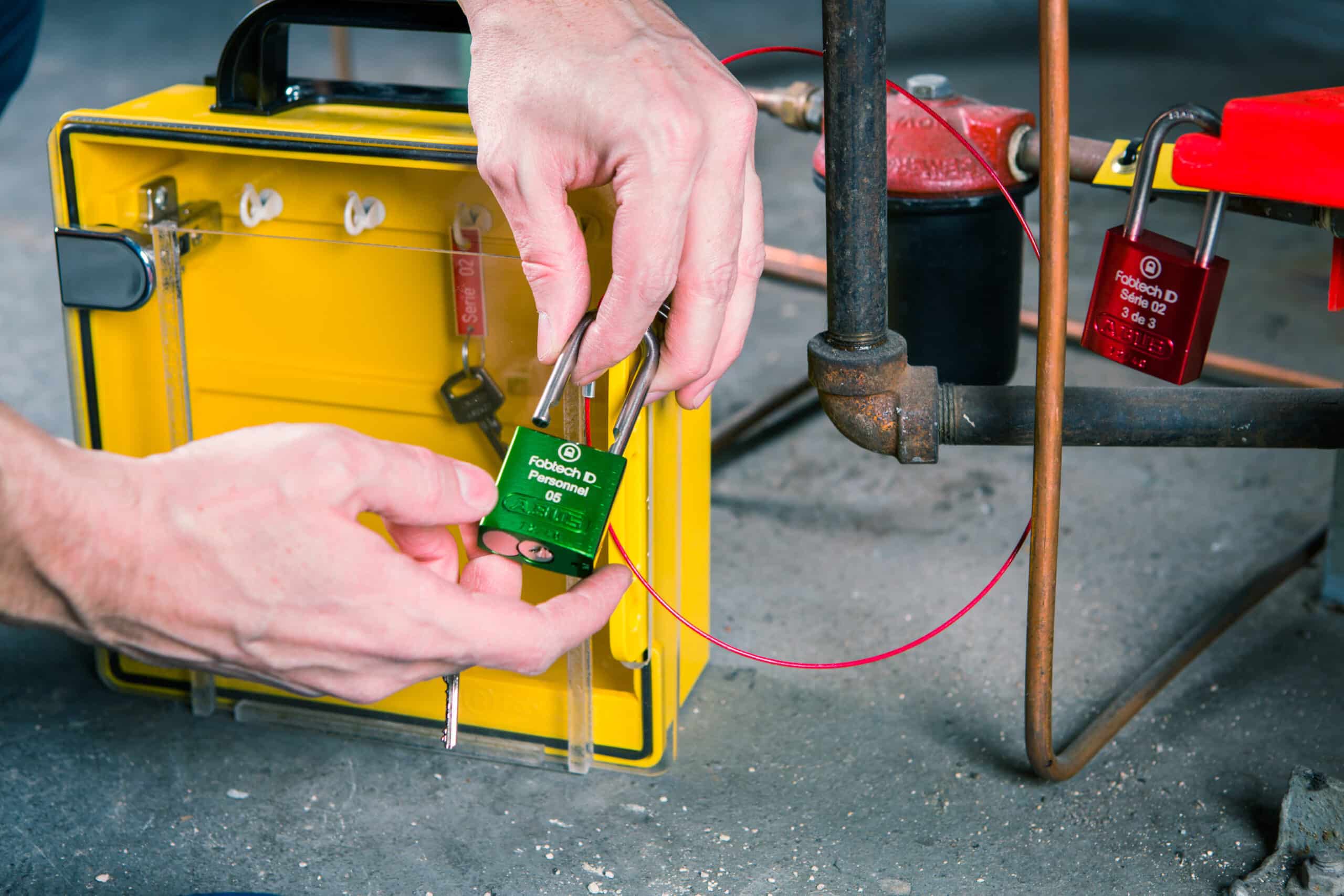LOTO | Different Types of Locks for Different Purposes


Confined Space Management from Strategy to Operations
29 March 2018
The first step in health and safety management is identifying risks and verifying legal compliance.
A confined space is a place of work that is fully or partially closed, and is not designed for regular human occupation, nor is it meant for that purpose. The entries and exits of such confined spaces are narrow or of smaller dimensions, having an internal configuration that could complicate the task of administering first aid, evacuation, rescue or other emergency operations (CSA Z1006).
Managing confined spaces is an obligation in several health and safety regulations around the world. Confined spaces management is a key component that ensures not only the health and safety of workers but also operational efficiency. Confined spaces management should also promote the hierarchy of preventive measures for risk control as defined by Canadian (CSA Z1006), American (ANSI/ASSE Z117.1) or international (ISO ISO 31000:2009) Standards:
Elimination of confined spaces is the most effective way to control a risk. All major normative principles follow the Plan-Do-Check-Act model and the management of confined spaces is not an exception. When correctly managed, it ensures the physical well-being of workers and helps to considerably reduce the time required to carry out a task in a confined space. For many organizations, the management of confined spaces is limited to procuring accessories (harness, lighting, ventilation, etc.) and/or having a series of well-documented procedures for entering into confined spaces with content that is kept up to date and easily available to workers. Although these aspects are very important, they only represent a few facets of the global management of confined spaces. Let us look at the elements that are necessary for the successful implementation of confined spaces management:
The first step towards the integration of a management system for confined spaces is to clearly define the rules and directives. Imagine playing a game of Monopoly without first establishing the “house rules”, the idea is inconceivable. Why should it be any different when it comes to the health and safety of workers? From the roles and responsibilities of each worker to the appropriate rescue equipment, the program is used to regulate the practice of entering closed spaces in an organization. This program should remain active and should be reviewed regularly in order to clearly define the objectives and practices of the organization.
It is important to create a list of confined spaces. Once the list is complete, the risks and hazards should be identified, and measured for their clear documentation and the possibility to transfer this information to the workers entering a confined space. Such tasks are usually carried out by qualified and competent personnel. Corrective measures, ranging from simply wearing PPE to the development of special tools, should be put in place in order to ensure the physical well-being of workers.
The next step is the development of procedures. Whether they are developed according to zones, or based on equipment or systems, the procedures should give details of the necessary steps to be taken in order to control hazardous energy sources to which the worker may be exposed while entering a confined space, the conditions to be observed while working in a confined space as well as the rescue measures to be taken in case of an emergency. While developing the procedures, it is important to take into account all the internal and external elements of the area of work. All the procedures should normally be verified by a competent authority and the final document should be approved by a company official (supervisor, director, etc.) before being implemented in the field. Finally, a periodic review of the information of each of the procedures should also be carried out.
As the adage goes, “if you can’t measure it, you can’t manage it”. It is thus difficult to suppose that the field application of the program for entry into confined spaces is well under control if we do not take the time to evaluate it on a regular basis. Various types of observations can be made in order to evaluate the compliance of the confined spaces management program:
The data compiled from these observations will allow the management to give feedback to the workers and supervisors and take corrective action in case deviations from the standards are noted.
Many organizations feel that it is important to “get better” at entry into confined spaces before starting the audits. However, it is the exactly opposite approach that should be adopted. When commencing the observation process on day 1 of the program launch, it is possible to reevaluate the deviations before they become bad practices.
Statistics on the use of procedures and other documents associated with entry into confined spaces can also provide crucial information on the efficiency of the systems that are in place. Once they are analyzed, these data can provide a predictive model that ensures global system optimization as well as sustainability.
In cases where the risks associated with confined spaces cannot be controlled by the application of the closed spaces management program, it is necessary to inform the worker about the control measures to be taken to ensure his safety and physical well-being. Safe working procedures or operating procedures will enable the workers to know all the hazards and risks that will be present during the execution of their tasks and will also lay down the steps to be taken in order to reduce the risks to an acceptable level.
There are various elements to be put in place to ensure the global management of entry into confined spaces in an organization. This non-exhaustive list of elements to be implemented reveals that confined spaces management comprises various facets. Integration of all these elements will ensure your compliance with laws and regulations as well as with current standards. It will also give the necessary flexibility to the health and safety culture of your organization ensuring a safe working environment to your employees, while operational optimization remains at the heart of the process.
Using a computerized tool like CONFORMiT will enable you to manage all the aspects of the installation process of your confined spaces management program, from regulatory auditing to field inspections, along with your risk analysis and creation of your permits and procedures.